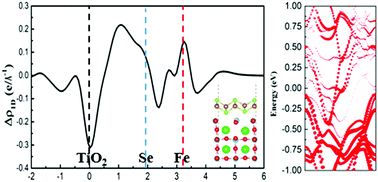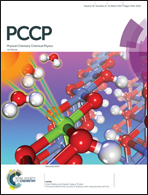Substrate and band bending effects on monolayer FeSe on SrTiO3(001)
Abstract
Motivated by the high superconducting transition temperature (TC) shown by monolayer FeSe on cubic perovskite SrTiO3(001) and SrTiO3(001)-2×1 reconstructed surfaces, in this study, we explore the atomic and electronic structures of monolayer FeSe on various SrTiO3(001)-2×1 surface reconstructions using the CALYPSO method and first-principles calculations. Our search reveals two new Ti2O2 and Ti2O reconstructed surface structures, besides the Ti2O3 and double TiO2 layer reconstructed surfaces, and the two new Ti2O2 and Ti2O reconstructed surface structures are more stable under Ti-rich conditions than under Ti-poor conditions. The Fermi-surface topology of an FeSe monolayer on Ti2O3- and Ti2O2-type reconstructed STO surfaces is different from that of an FeSe monolayer on a Ti2O-type STO reconstructed surface. The established structure of monolayer FeSe on a Ti2O-type STO(001) reconstructed surface can naturally explain the experimental observation of the electronic band structure on the monolayer FeSe superconductor and obtained electrons counting per Fe atom. Surface states in the mid-gap induced by various STO surface reconstructions will result in band bending. The surface-state-induced band bending is also responsible for the electron transfer from the STO substrate to the FeSe films.



 Please wait while we load your content...
Please wait while we load your content...